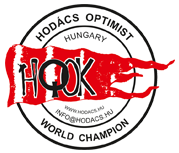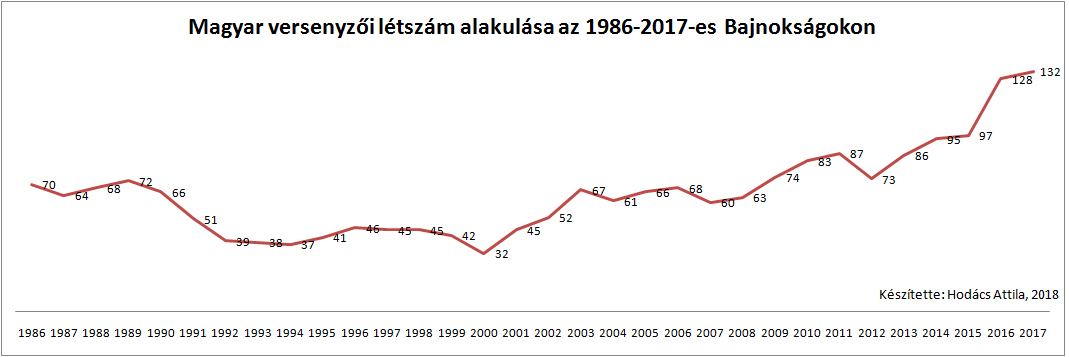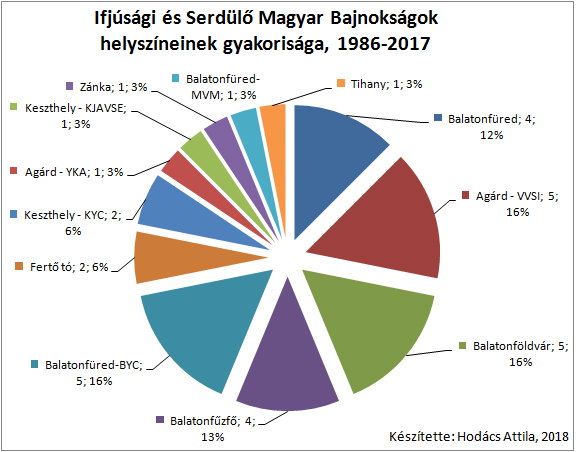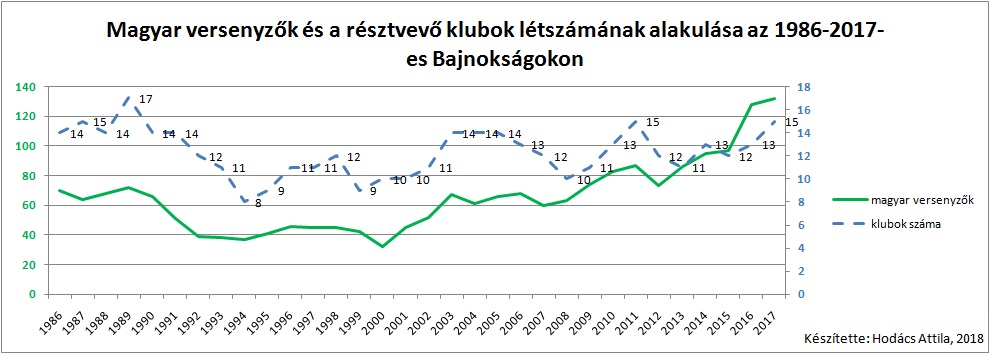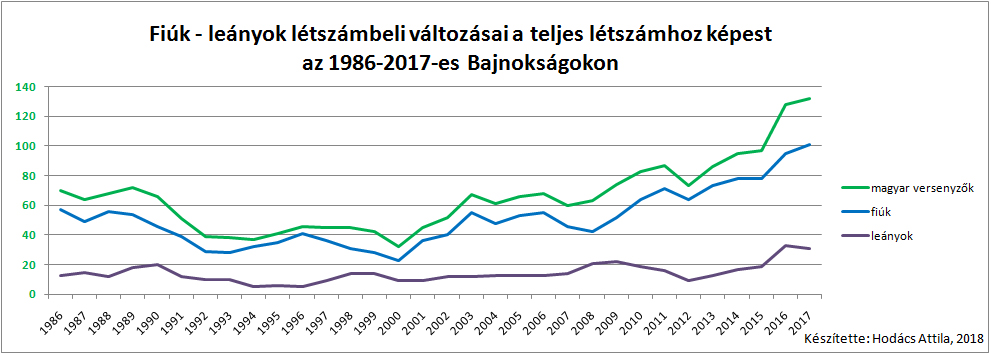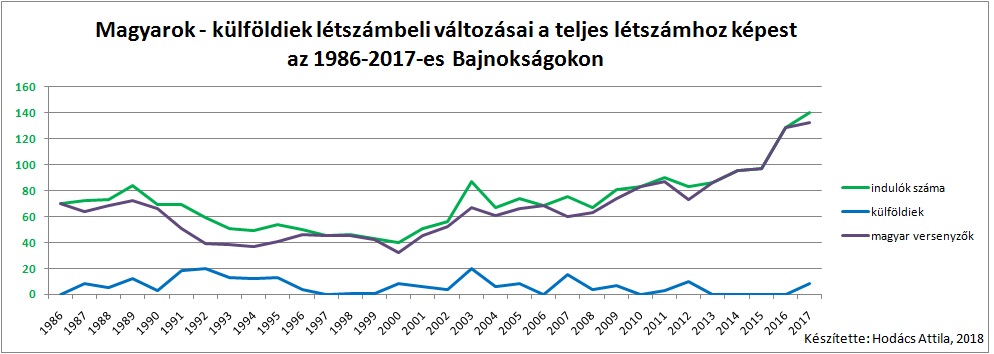Analyzing 32 years of resultlists of Hungarian Nationals
Hello everyone!
I knew this post would take a lot of time, but I didn’t realize just how much! Despite that, I think it was worth it. Read through the entire post—it’s packed with insights.
Nowadays, data is often called the "new gold." Everyone is building, editing, and analyzing databases, tracking cookies and behaviors. My goal here wasn’t to follow trends, but simply to see what insights could be drawn from decades of Optimist championship results (archived data) that I could still find.
On the Optimist.hu website, there’s a table of Optimist champions from 1974 onward, recording the top three youth and junior positions each year. It’s an excellent collection, initially based on a special issue of Vitorlázás Magazin. Since the early 2000s, I’ve been updating the results myself. However, to answer the questions I had in mind, this data was insufficient because I needed the complete rankings.
So, my first step was to head to the Association, where I found the championship results from 1986 onward. These were all on paper, so I spent a few hours digitizing them. The most thorough approach would have involved OCR scanning, but I didn’t go that far.
Fortunately, since 2004, I’ve been collecting the rankings myself, so I only needed to scan the 1986-2004 period. This was the easy part. Afterward, I had to evaluate the rankings based on the questions I had set, which would have been much simpler if the data had been “properly” digitized or retyped. With 32 years of championship results, here are the main questions I aimed to answer:
- Changes in participation numbers
- Number of participating clubs
- Changes in the ratio of cadett/junior, boys/girls
- Frequency of hosting locations
- Percentage of foreign participants
- Some interesting records and notable achievements
Analyzing data can yield all sorts of interesting information, but I hope my analysis is not just "fun trivia." I tried to include some useful insights, but my main goal was to provide factual support for some commonly held beliefs.
It’s worth considering how valuable it would be to base decisions in class strategy or fleet policy on a 32-year data analysis. Each year, a vast amount of data is generated (event documentation), which will need to be organized and archived someday. This may happen at the club level, where someone keeps the documents until a storage cleanup happens.
Digital records are more likely to have multiple copies, but there are fewer copies of older paper records, and they risk deteriorating. Going back to the mid-1980s, many results are handwritten and would require an experienced sailor to interpret if they were digitized.
If the Association could take on the task of digitizing these records—at least scanning rankings and championship results as images—it would be a significant step forward! This could also be done at the club level, helping the Association and preserving records that may only exist in physical archives.
What 32 Years
of Optimist National Championship Data Shows
The first chart shows changes in Optimist competitor numbers over time.
In the 1990s, there was a sharp decline, likely due to the shift from state funding to private sponsorship. Fortunately, since the 2000s, numbers have been on a steady rise, despite some fluctuations. Reasons could include the popularity of sailing, quality club programs, and increased club/private opportunities—or simple demographic growth (I haven’t cross-checked population data).
A few years ago, when participation reached 80, many said it was a record number, though the late '80s also had similar numbers. For example, at the 1987 Szobi Cup, there were 86 entries, 12 of whom were foreigners.
While I didn’t compare growth to demographic data, it’s worth examining how the number of clubs involved in Optimist sailing has impacted participation. There’s a close relationship, with club numbers closely mirroring participant numbers. Recent years have seen more club-level coaches, and it’s likely that each coach manages a maximum of 10 sailors.
The ratio of boys to girls is always interesting. In recent years, girls have been doing well, with a separate category for girls’ champions. Still, there’s room for improvement, as the boys’ curve aligns more closely with the overall participation curve, showing that boys’ numbers have a stronger influence.
In terms of age groups, since 2005 (especially from 2010), juniors (under-13) have been roughly twice as numerous as youth sailors (13-15). This suggests that sailors spend around 3-4 years competing as juniors, while most spend only 1-2 years in the youth category before moving on. In Optimist terms, this means there’s a high dropout rate or transition to other classes around this age.
Foreign participants have won the Hungarian Championship five times over 32 years: twice by Czechs, twice by the same Slovak sailor, and once by a Dutch sailor. While this shows a strong defense of the national title, foreign participation in the championships is still low. Despite some international success that could attract more competitors, the Hungarian OB isn’t very popular with foreign sailors. There are often schedule conflicts, but promoting the OB more could be beneficial.
Analyzing the data, I was curious about which locations or clubs have hosted Youth and Junior Championships, specifically Optimist OBs, most frequently over the last 32 years. The chart highlights each location’s share of the total, noting that some events were organized jointly between Füred clubs and the Association.
Interesting Data Highlights
I also dug into some record-setting achievements.
Most National Titles Won by Sailors
It’s a significant feat to win even two titles, but a few sailors managed to
win three or four titles during their Optimist sailing years.
|
Year |
Name |
Number of Titles |
Titles as Junior |
Titles as Youth |
|
2000-03 |
Imre Váradi |
4 |
3 |
1 |
|
2006-09 |
Benjamin Vadnai |
4 |
2 |
2 |
|
1988-90 |
Tamás Eszes |
3 |
1 |
2 |
|
1993-94,97 |
Attila Hodács |
3 |
2 |
1 |
|
1999-2001 |
Zsombor Berecz |
3 |
- |
3 |
|
2013-15 |
Máté Jeney |
3 |
3 |
- |
Lowest Score National Champions
These sailors won their championships with the fewest possible points, having
won every race that counted toward the final score.
|
Year |
Name |
Placings |
|
1989 |
Tamás Eszes |
1*,1,1,1,1,1 |
|
1997 |
Attila Hodács |
1,1,1,1,1,2*,1 |
|
2016 |
Attila Bányai |
1,1,1,1,2*,1,1,7*,1 |
Best Female Results
Here are the top finishes by female sailors, showing that there’s still a
record from 1987 waiting to be broken by today’s girls!
|
Year |
Name |
Overall Position |
|
1987 |
Bernadett Eszes |
1 |
|
1986 |
Bernadett Eszes |
2 |
|
1988 |
Krisztina Bácsics |
2 |
|
2003 |
Réka Karácsony |
2 (6*) |
|
2007 |
Fanni Péch |
2 |
|
2014 |
Csenge Veenstra |
2 |
|
1990 |
Márta Weöres |
3 |
|
1993 |
Gabriella Adlovits |
3 (4*) |
|
2008 |
Fanni Péch |
3 |
* Includes foreign competitors.
Best Junior/Cadett Results
Junior champions generally place in the top 1-10 of the overall standings,
though some have finished outside the top 10. Here are a few juniors who led
the overall standings as well.
|
Year |
Name |
Overall Position |
|
1986 |
Zsolt Gömöry |
1 |
|
1991 |
Ákos Gyenes |
1 |
|
1998 |
Bálint Bors |
1 |
|
2007 |
Benjamin Vadnai |
1 |
|
2014 |
Máté Jeney |
1 |
|
2016 |
Attila Bányai |
1 |
Summary
In today’s data-rich world, taking time to
analyze information is worthwhile because it reveals valuable insights. I’ve
uploaded the results here and believe the Association website will also host
them. Several result tables also contain championship results from other boat
classes, so feel free to browse and take a walk down memory lane!
Sources
The original 1986-2004 results can be found at the MVSZ office, with the
exception of 1998, courtesy of János Karácsony. Thank you to István Hantó for
verifying the 1992 list by age category, and to Makusz and Bozó for their
research. The 2005-2017 lists are from my personal archives.
Note from My Personal Archive
The 2005-2017 results come from my personal
archive. As a side note, my curiosity got the best of me, and this research
took a lot of time, but it was truly uplifting. Going through these rankings,
seeing the names of sailors who are now parents with their own kids sailing
Optimists, felt like watching the sailing (at least Optimist) journeys of these
individuals unfold before my eyes. Reading the results, I witnessed close
championship placements decided by single points, rivalries spanning years, and
the sudden emergence of talents. It was a joy to go through!
Boat Class Participation by Year
|
Year |
Optimist |
Cadet |
Moth |
Europe |
Laser 4.7 |
Laser Radial |
Laser |
S-Yolle |
Snipe |
Zoom8 |
420 |
470 |
Kormorán |
|
1986 |
X |
X |
X |
||||||||||
|
1987 |
X |
X |
X |
||||||||||
|
1988 |
X |
X |
|||||||||||
|
1989 |
X |
X |
|||||||||||
|
1990 |
X |
X |
|||||||||||
|
1991 |
X |
X |
X |
X |
|||||||||
|
1992 |
X |
X |
X |
X |
X |
X |
X |
||||||
|
1993 |
X |
X |
X |
X |
|||||||||
|
1994 |
X |
X |
X |
X |
X |
X |
X |
X |
|||||
|
1995 |
X |
||||||||||||
|
1996 |
X |
||||||||||||
|
1997 |
X |
X |
X |
||||||||||
|
1998 |
X |
||||||||||||
|
1999 |
X |
X |
X |
||||||||||
|
2000 |
X |
X |
X |
||||||||||
|
2001 |
X |
X |
X |
||||||||||
|
2002 |
X |
X |
X |
||||||||||
|
2003 |
X |
X |
X |
||||||||||
|
2004 |
X |
||||||||||||
|
2005 |
X |
X |
X |
X |
X |
||||||||
|
2006 |
X |
X |
X |
X |
X |
||||||||
|
2007 |
X |
||||||||||||
|
2008 |
X |
||||||||||||
|
2009 |
X |
||||||||||||
|
2010 |
X |
X |
X |
X |
X |
X |
|||||||
|
2011 |
X |
X |
|||||||||||
|
2012 |
X |
X |
X |
X |
|||||||||
|
2013 |
X |
||||||||||||
|
2014 |
X |
||||||||||||
|
2015 |
X |
||||||||||||
|
2016 |
X |
||||||||||||
|
2017 |
X |
